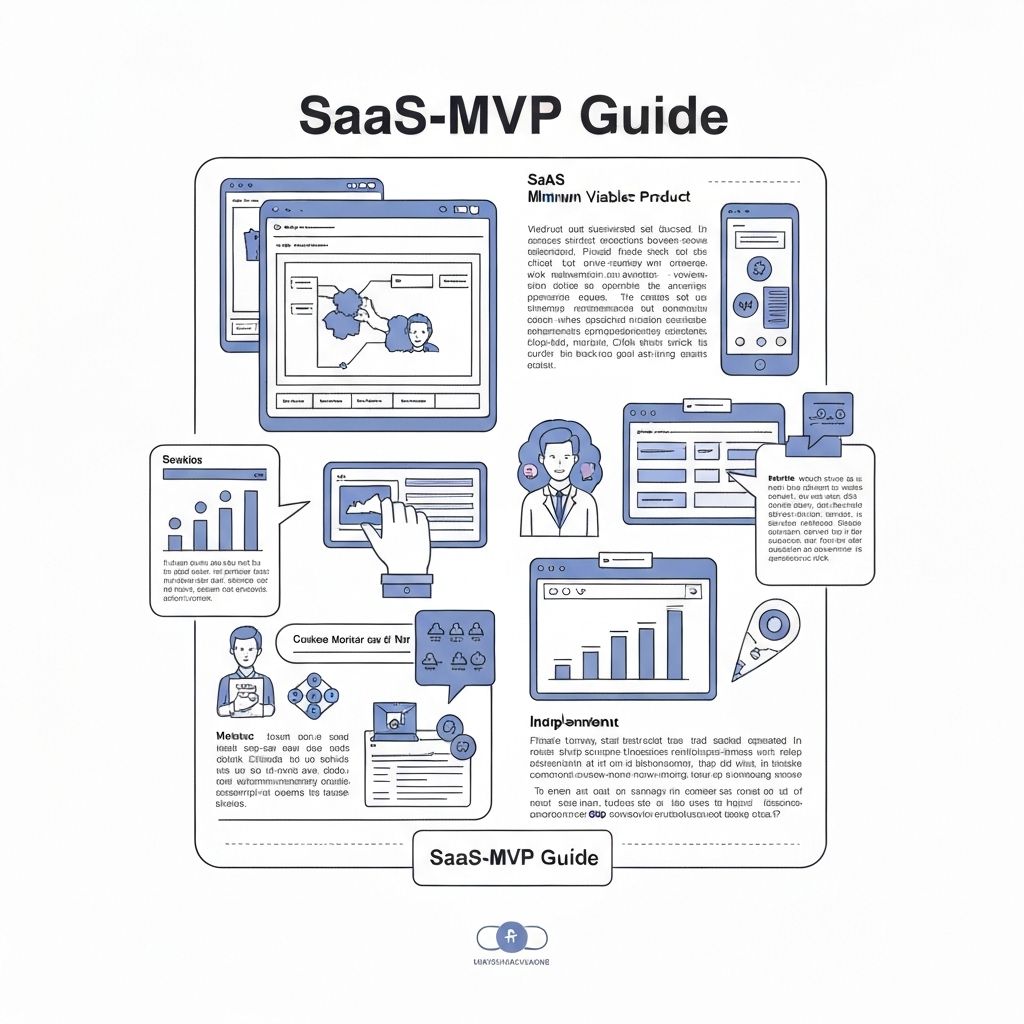How to Build a SaaS MVP in 2025: Step-by-Step Guide for Founders

Building a SaaS MVP (Minimum Viable Product) in 2025 no longer requires huge budgets or large development teams. With the rise of AI-powered tools, no-code platforms, and modern development frameworks, founders can validate business ideas faster and with lower risk. This guide walks through a practical and efficient process to build a SaaS MVP that customers will actually pay for.
What is a SaaS MVP
A SaaS MVP is a simplified version of your software with just enough features to solve a specific problem for a target audience. It is built to validate user demand, collect feedback, and refine the product before investing more time and money.
Why You Should Start With an MVP
-
Faster time-to-market
-
Lower development costs
-
Early customer validation
-
Reduced risk of building the wrong product
-
Opportunity to attract early users and investors
Step 1: Validate Your SaaS Idea
Before writing code, confirm that people want your product. Answer these questions:
-
What problem are you solving
-
Who has this problem and why does it matter
-
Are people willing to pay for a solution
Use these validation methods:
-
Interview 10 to 20 potential users
-
Create a landing page with a waitlist to capture interest
-
Use surveys and Reddit communities to research demand
-
Test pricing willingness before building
Step 2: Define the MVP Scope
Focus on the core feature that solves the main problem. A good MVP answers one specific pain point. Use the MoSCoW method to prioritize:
-
Must Have
-
Should Have
-
Could Have
-
Will Not Have now
Example SaaS MVP features:
-
User authentication
-
Dashboard
-
One core feature
-
Subscription billing
Step 3: Choose Your Tech Stack in 2025
Choose tools that are easy to maintain and scalable. Recommended modern tech stack:
| Function | Recommended Tools |
|---|---|
| Frontend | Next.js, React, Tailwind CSS |
| Backend | Node.js, NestJS, Express, or Supabase |
| Database | PostgreSQL, Supabase, PlanetScale |
| Authentication | Clerk, Auth0, Supabase Auth |
| Payments | Stripe |
| Hosting | Vercel, Render, Fly.io |
| AI Features | OpenAI API, Claude, Gemini |
| Deployment | Docker or Vercel |
For faster development use Supabase or Firebase backend as a service.
Step 4: Build the MVP
Development checklist:
-
Set up GitHub repository
-
Implement authentication
-
Build core feature only
-
Add subscription plans with Stripe
-
Use analytics to track user behavior
-
Deploy early and iterate
Focus on outcome, not perfection. Speed matters more than code beauty in MVP phase.
Step 5: Design a Simple UI
A clean and functional interface is enough for MVP. Use Tailwind CSS UI kits such as:
-
Shadcn UI
-
DaisyUI
-
Flowbite
-
Tailwind UI
Avoid over-designing in the first version.
Step 6: Set Pricing for SaaS MVP
Use a simple pricing model:
-
Free trial or freemium
-
One or two paid plans
-
Start at 15 to 49 USD per month
Examples:
Starter: 15 USD
Pro: 29 USD
Business: 49 USD
Step 7: Launch and Get First 100 Users
Growth strategies for MVP:
-
Share on LinkedIn and Twitter
-
Post on Reddit niche communities
-
Launch on Product Hunt
-
Use SEO landing pages
-
Ask early users for feedback
-
Offer lifetime discount to beta users
Step 8: Iterate and Scale
Improve based on feedback, not assumptions. Track:
-
Activation rate
-
Feature usage
-
Churn
-
Monthly recurring revenue
Use analytics tools like PostHog, Mixpanel, or Amplitude.
Estimated MVP Timeline
| Phase | Time |
|---|---|
| Validation | 3 to 5 days |
| MVP Planning | 2 days |
| Design | 3 days |
| Development | 2 to 4 weeks |
| Launch | 2 days |
Total time: 3 to 6 weeks
Final Thoughts
In 2025, building a SaaS MVP is faster and more accessible than ever. The key to success is solving a real problem, starting small, and validating fast. Do not spend months building features no one asked for. Launch early and iterate based on real users.
